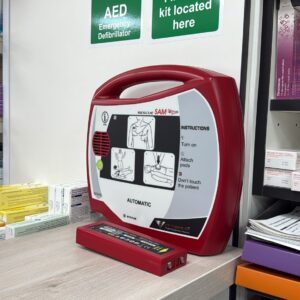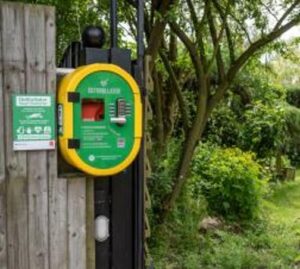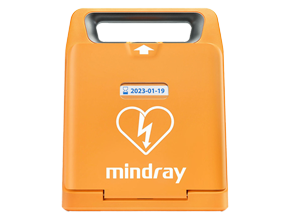BHF Free Defibrillator Scheme 2025 Comprehensive UK Guide
Why the BHF AED Scheme Matters in 2025
Sudden cardiac arrest strikes over 30,000 people each year in the UK, yet fewer than 8 percent survive without immediate defibrillation. An AED used within the first 3–5 minutes can raise survival rates to as high as 70 percent.
From summer 2025, the British Heart Foundation will award fully funded AED packages to eligible not-for-profit community groups. This landmark program targets areas with the greatest need: rural villages, community halls, and urban estates that currently lack public-access defibrillators.
By placing AEDs exactly where sudden cardiac arrests are most likely to occur, the BHF scheme transforms local resilience and helps everyday volunteers become first-response heroes.
Defib Supplies can then step in to complete your life-saving kit: we offer matching cabinets, genuine replacement pads, fresh batteries, and hands-on guidance so you have everything you need to install, maintain, and use your AED with confidence.
By combining the BHF’s device funding with our all-in-one accessory and support packages, you’ll bridge critical access gaps in rural villages, community halls, and urban estates and empower local volunteers to become first-response heroes.
What Is an AED and Why It Saves Lives
An Automated External Defibrillator (AED) is a portable medical device designed to analyse a person’s heart rhythm and deliver a controlled electric shock if required to restore a normal heartbeat. It offers both voice and visual prompts to guide any bystander, whether trained or untrained, through each step of the rescue process.
AEDs also perform automated self-tests to confirm they’re ready for use, with only occasional pad and battery replacements needed to maintain readiness. Designed for simple public use, these devices can be operated safely by volunteers after a brief familiarisation session, making them an indispensable tool in the critical first minutes of a cardiac arrest.

Who Can Apply for a Free AED in the UK
To qualify for a FREE BHF-funded AED, your organisation must:
- Be a registered charity, Community Interest Company (CIC), parish or town council, PTA, sports club, faith group, or village hall committee.
- Operate within England, Scotland, Wales, or Northern Ireland.
- Commit to ongoing care by:
- Registering the AED on The Circuit
- Performing monthly visual checks (pad expiry, battery-status LED) and logging them
- Nominating two guardians who complete a brief CPR & AED familiarisation
“We never imagined our small village hall could secure an AED; now we know we can save a neighbour’s life.”
Sarah, Village Hall Chair, Cumbria
Real-world events have shown the importance of rapid AED access in sport scenarios. In one instance, a student suffered a cardiac arrest during a school cricket match, highlighting the urgent need for on-site defibrillators that are easy to use in paediatric emergencies.
Step-by-Step: How to Apply by 31 May 2025
- Check Eligibility
Visit the BHF scheme page to confirm your group fits the criteria. - Gather Your Details
Have your charity/CIC number, full postal address, and contact info for two volunteer guardians ready. - Submit the Online Application
Applications are first-come, first-served. Early submission is essential. - Await Confirmation & Delivery
Approval emails arrive within 5 working days, followed by dispatch in 2–4 weeks, complete with user manuals and a simple maintenance log. - Install & Train
Mount the AED in a clearly visible, weather-protected cabinet. Consider our outdoor cabinets for external sites or indoor cabinets for sheltered areas.
Best Locations for Your Public Access AED
Choosing the optimal site boosts both visibility and response times. Entrances, reception halls, or community rooms where people naturally gather are ideal high-footfall zones. To ensure round-the-clock availability, install the AED in an external coded cabinet with illuminated “AED” signage; our range of weatherproof cabinets can withstand temperatures from –10°C to +50°C.
Clear wayfinding is also crucial; adding vinyl arrows or window decals every 5–10 m helps guide visitors to the device even in low-light conditions. For larger venues or multi-site organisations, we can supply Wi-Fi-enabled cabinets that send remote status alerts; just ask our blog on “Choosing The Right AED Cabinet: Indoor Vs Outdoor Solutions” for details.

Maintenance & Training Checklist for Community Groups
A well-maintained AED is a reliable AED. Check out our AED Maintenance Guide to help you track and understand each task:
- Monthly: Verify pad expiry dates, battery-status LED, and cabinet integrity.
- Every 24 Months: Replace electrode pads (or immediately after any use).
- Every 4 Years: Change the battery pack on models like the Philips HS1.
- Guardian Refresher: Schedule a 30-minute hands-on session every six months with BHF’s free e-guides.
Under UK Good Samaritan protections, any rescuer acting in good faith is shielded from liability so long as your AED is maintained and used correctly.

London Heart & Mindray C1A Update
We’re closely monitoring developments around the Mindray C1A recently approved for UK public access use by London Heart.
In our commercial blog on the Mindray C1A, we’ll explore why this sleek, compact AED is generating buzz in London’s health circles, how it compares to other models in ease-of-use and feature set, and the special bundle offers we provide for community groups who missed BHF scheme allocations.

FAQ: BHF Free Defibrillator Scheme
Q1: What if I miss the 31 May deadline?
You’ll be placed on a reserve list. If you need urgent cover, our team can advise on grant-eligible AED options or cost-effective packages.
Q2: Are commercial businesses eligible?
No, this program is strictly for community-based, not-for-profit organisations. Businesses should explore our AED packages.
Q3: Can I relocate my AED later?
Yes, simply update your registration on The Circuit and relocate your cabinet and signage.
Q4: How do I comply with MHRA regulations?
All UK AEDs must bear a UKCA or CE mark; manufacturers handle compliance. You do not register through MHRA directly.
Q5: Do I need special insurance for my AED?
Most public liability policies already cover properly maintained AEDs.
Next Steps & Resources
We’re here to support you every step of the way:
- Apply by 31 May 2025
Complete the quick online form on the BHF scheme page; this simple act could save a life. - Register on The Circuit
As soon as your AED arrives, log it on The Circuit so ambulance services can locate it in an emergency. - Read Our Maintenance Guide
Use our free AED Maintenance Guide to stay audit-ready. - Speak with Our Experts
Whether you need advice on cabinets, signage, pads, or batteries, our friendly team is on hand. Reach out and contact us.
Thank you for taking these vital steps to protect your community. Your commitment today can mean a second chance tomorrow, one heartbeat at a time.
Featured blog image source: bhf.org.uk


